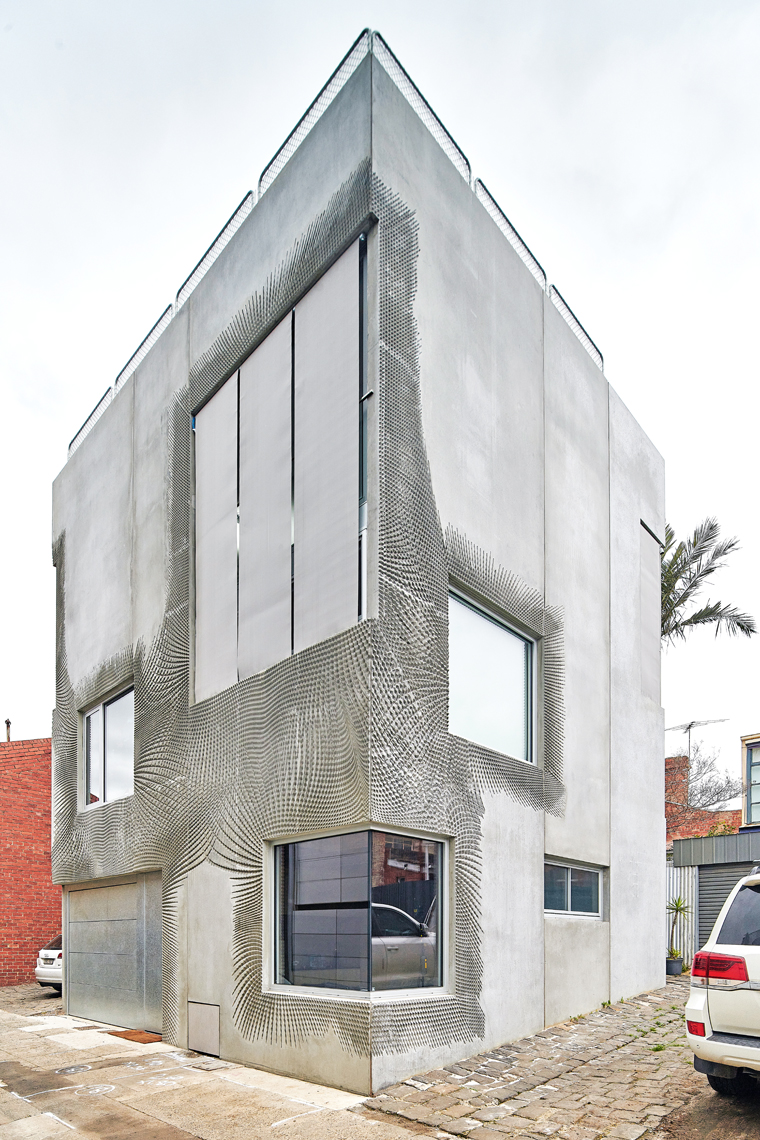From a once vacant unkempt block with discarded furniture strewn across it to a charming family dwelling, this project is a standout.
Designing for Functionality and Heritage
Ben Milbourne from Bild Architecture and artist and photographer Tanja Milbourne were the owners of the project, and live there with their daughter and family dog. The couple wanted to build a home in North Melbourne that was fluid in form, one that would aptly accommodate their family’s needs over time. “We were also conscious of the rich built heritage of North Melbourne and really wanted to engage with and contribute to this layered history in a contemporary way,” says Ben.

Testing New Ideas and Approaches
As it was his own home, Ben enjoyed the autonomy that went with that. “As an architect, the freedom of our own project allowed me to test new ideas and approaches that perhaps I would not have been able to on projects for other clients,” he notes. It was a decision that certainly paid dividends. The final project is a design coup in beautiful functional living in a very compact 8mx8m site.
The three-storey house incorporates three levels of functional living space and a terrace with outdoor stairs to the rooftop garden, where you can immerse yourself in the magical city views beyond. There are three bedrooms, bathroom, master bedroom and ensuite, kitchen, dining and lounge room, opening out onto a small terrace on the third level. The ground floor houses a single garage and self-contained apartment.

Ben says given the tight parameters, with the footprint covering the whole house, the garden was moved to the rooftop. “There’s no left-over or wasted space in the house; rain-water tanks are tucked under the main stairs on the ground level and the ensuite shower under the stairs on level one, storage units are squeezed into void spaces that in other projects would have been left unused,” he says. In some cases, spaces within the home had to serve multiple functions.
Another challenge was site access for construction. To overcome this, they incorporated pre-cast concrete structures, fabricated off-site and then trucked in an erected in one day.
Innovative Design and Technology
Ben is a senior lecturer in architecture at RMIT University. “I was interested in how, in historic buildings near our site, the areas around windows and doors have increased surface articulation to draw your visual attention and also to deflect water and dirt from these openings,” he says. “In this project I interpreted this trait using an algorithm that simulates magnetic fields, creating a turbulent surface around the windows and doors of a 3D model of the building.

“We then used a computer-controlled milling machine to carve the turbulent surface pattern into plywood panels, which were used as moulds into which the pre-cast concrete wall panels were poured and set, imprinting the complex surface pattern into the walls of our home,” he explains.
Ben says the exterior of the project was deliberately monochromatic to highlight the textured and patterned concrete skin of the building. The interior spaces are infused with life and colours that add a splash of playfulness. In each of the bathrooms, for example, there are brightly coloured vinyl finishes in yellow, blue and green. There is also warm timber that offsets the coolness of the concrete surfaces.

A Green Rooftop Garden and Multi-Functional Spaces
For Ben and Tanja, their favourite part of the project is the garden. “We both love our rooftop garden; it allows us to grow our own food and is our sanctuary in the city,” enthuses Ben.
As they worked on the project during COVID-19, Ben says they did tweak it a little. The third bedroom became a work space from home for Tanja, with a fold-down bed hidden in wardrobes for when visitors stay.
Ben says one of the most memorable moments of the project was witnessing the large panels arrive. “Watching the pre-cast concrete panels arriving on site and being lifted into place (some weighed more than 14 tonnes) in a single day was pretty astonishing and, to be honest, more than
a little terrifying,” he recalls.
Photography: Fremantle Australia















